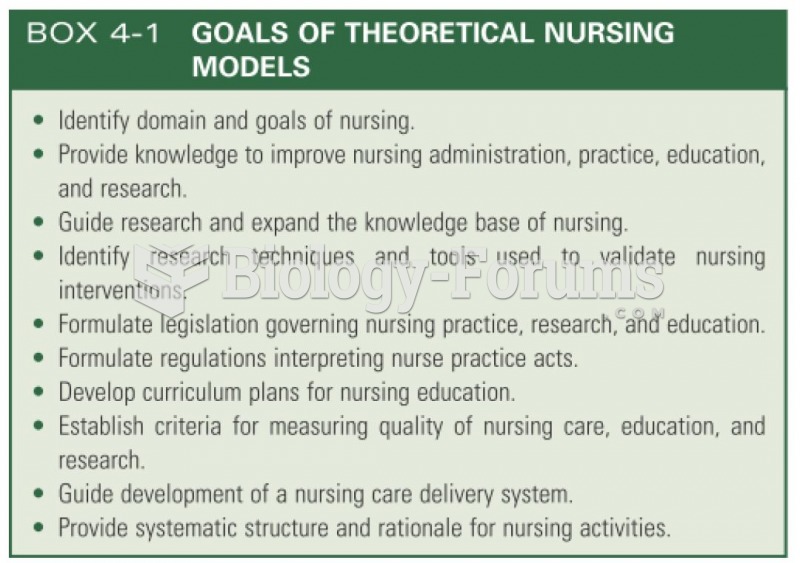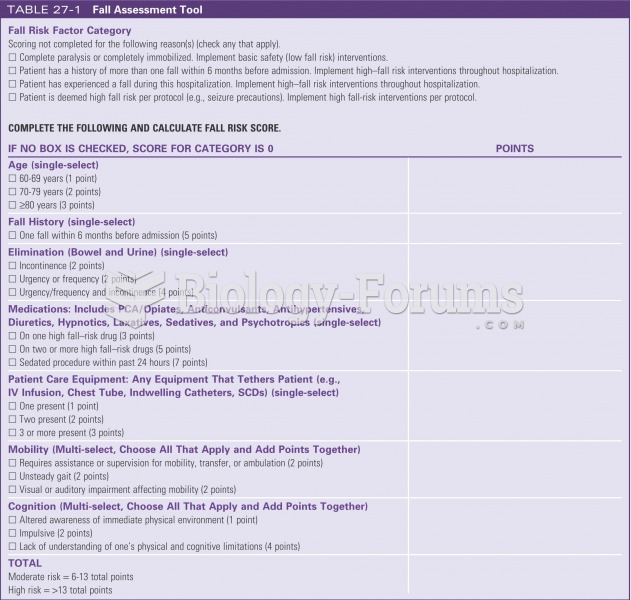|
|
|
More than 150,000 Americans killed by cardiovascular disease are younger than the age of 65 years.
Hypertension is a silent killer because it is deadly and has no significant early symptoms. The danger from hypertension is the extra load on the heart, which can lead to hypertensive heart disease and kidney damage. This occurs without any major symptoms until the high blood pressure becomes extreme. Regular blood pressure checks are an important method of catching hypertension before it can kill you.
Approximately 15–25% of recognized pregnancies end in miscarriage. However, many miscarriages often occur before a woman even knows she is pregnant.
The first oral chemotherapy drug for colon cancer was approved by FDA in 2001.
On average, the stomach produces 2 L of hydrochloric acid per day.







